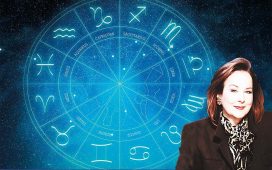
On July 12, 2022, NASA released the first images from the James Webb Space Telescope, NASA’s largest and most powerful space science telescope, which appeared in a televised broadcast. The ambitious telescope’s first images provide the deepest space images in mankind’s short history, allowing humanity the first glimpse into the origins of our universe.
Meanwhile, the science philanthropist, technology investor, and Breakthrough Initiatives founder Yuri Milner has been pondering and researching humanity’s place in the universe since he was a child. He has dedicated several years to this research and is the author of the Eureka Manifesto, which works to illuminate the meaning behind humanity’s place in the cosmos by asking pivotal questions about our existence and humanity’s purpose.
Here, we’ll explore how the James Webb Telescope and Eureka Manifesto can peer deeper into the abyss of space and answer questions such as: How did we get here? Are we alone in the universe? And how does the universe work?
The James Webb Telescope
The $10 billion James Webb Telescope is an infrared space observatory that NASA launched on Dec. 25, 2021, from ESA’s launch site in Kourou, French Guiana, aboard an Arianespace Ariane 5 rocket. This telescope is now probing the cosmos to help space science leaders understand the history of the universe, all the way from the Big Bang to the possibility of alien planet formation.
The James Webb Telescope is one of NASA’s Great Observatories, which are enormous space instruments like the Hubble Space Telescope, each of which helps humanity learn more about the cosmos.
This telescope will examine four main areas:
- The first light in the universe.
- The assembly of galaxies in the early universe.
- The birth of stars and protoplanetary systems.
- The planets — including the origins of life.
According to NASA, the James Webb Telescope has enough fuel to more than double its minimum life expectancy of 10 years.
Yuri Milner’s Eureka Manifesto
Meanwhile, Yuri Milner has written the Eureka Manifesto to share his ideas about the significance of the cosmos and our shared mission. The manifesto argues that humanity needs a shared mission to not only survive but to thrive too.
According to Yuri Milner, our mission is to explore and understand the universe. He considers this mission a continuation of the Universal Story, the process of evolution from matter to structure, living systems, and the human minds that discovered science. If we are to survive existential threats and build a civilisation that lives far into the future, Yuri Milner believes we must nurture a new enlightenment that embraces science and reason.
In the manifesto, Yuri Milner explains that by taking up this mission, mankind can reduce the risk of our extinction, which could occur through our own doing or as a result of a threat from space. For example, such a threat could include a “death bubble,” an existential threat caused by an expanding rupture in space.
Breakthrough Initiatives: Listen and Starshot
Aside from authoring the Eureka Manifesto, Yuri Milner is also the founder of the Breakthrough Initiatives, a set of space science programmes that investigate extraterrestrial intelligence and the wider cosmos. Two arms of this programme include Listen and Starshot, which focus on developing a technology to send a nanocraft to Alpha Centauri, our nearest star system, and listening out for alien communications.













